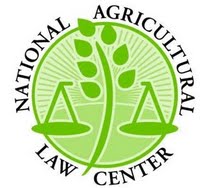Posted September 23, 2015
The former owner of a Georgia peanut company was sentenced to 28 years in prison on Monday for his role in a salmonella outbreak that killed nine people and sickened hundreds, according to a Reuters article available here. CNN also published an article available hereand USA Today here.
Stewart Parnell, former owner of Peanut Corporation of America, and his brother, Michael Parnell, a company food broker, were convicted on federal conspiracy charges in September 2014 for knowingly shipping salmonella-tainted peanuts to customers.
The contamination at the company’s plant in Blakely, Georgia, led to one of the largest food recalls in U.S. history and forced the company into liquidation.
A federal judge handed Parnell a 28-year prison sentence, the harshest penalty in history for a corporate executive in a food poisoning outbreak. Parnell is 61 and unless he wins an appeal, he will have to serve out most of his term, according to CNN.
Michael Parnell received a 20-year sentence, and the plant’s quality assurance manager, Mary Wilkerson, was given five years.
A federal jury convicted Parnell last September on 71 criminal counts, including conspiracy, obstruction of justice and introduction of adulterated food, following evidence that Parnell and the co-defendants knowingly shipped salmonella-tainted peanut butter from the Georgia facility to Kellogg’s and other customers — who in turn used it in products ranging from packaged crackers to pet food, according to USA Today.
Federal investigators who checked the Georgia facility found a leaky roof, roaches and evidence of rodents. They also discovered emails and records proving salmonella tainted food was shipped to customers.
Other peanut batches were never tested, but were still shipped with fake lab records stating salmonella screenings were negative, according to the prosecution evidence.
Additionally, the judge wrote that Parnell and Wilkerson should bear responsibility for just under $200 million in losses. Michael Parnell should bear responsibility for just under $50 million in losses, Sands ruled.
For more information on food safety, please visit the National Agricultural Law Center’s website here.
Share:
